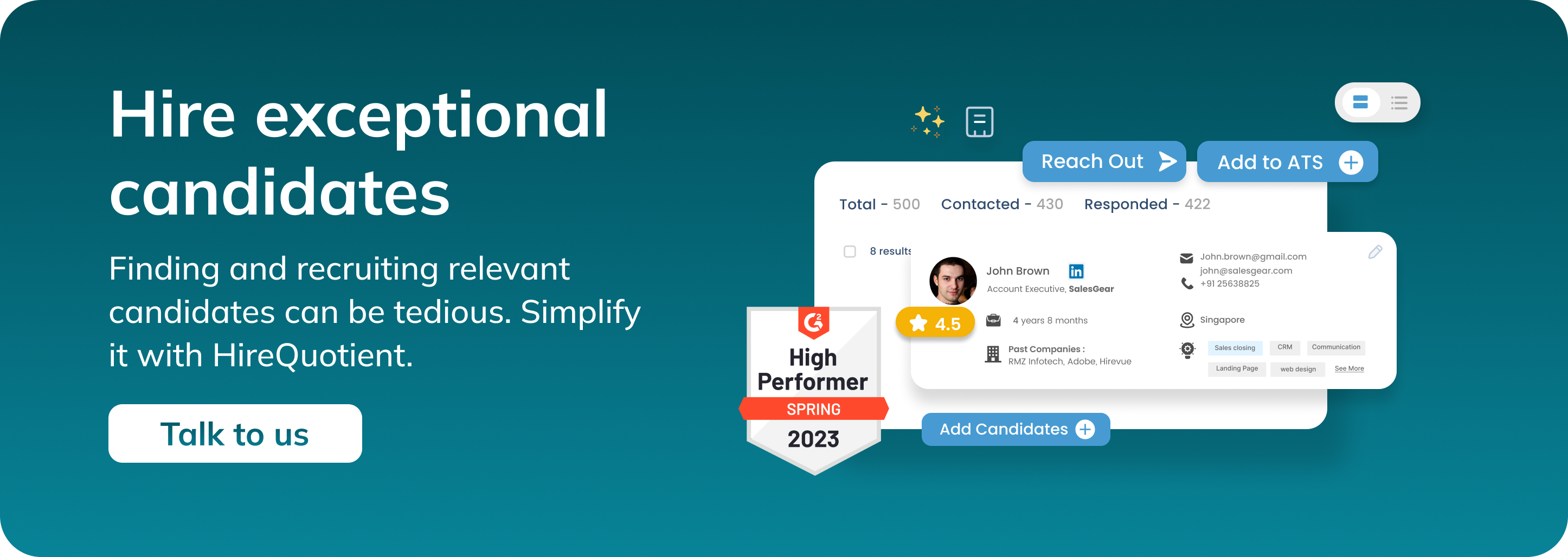What is Regretted Attrition?
Published on April 9th, 2024
In today's competitive talent market, attracting and retaining the right employees is crucial for the success of any organization. Many companies invest heavily in recruiting, onboarding, and training employees to ensure they stay motivated and engaged in their roles.
However, there are instances when even the most loyal employees choose to leave, and this is called attrition. Regretted attrition is a term that has been used frequently in recent years to describe a phenomenon that is hurting companies and their recruiters immensely.
In this article, we will define what is regretted attrition, its implications on recruitment, and best practices on how to mitigate this challenge
What is Regretted Attrition?
Regretted attrition is the departure of talented employees who are highly valued by the company, but typically leave due to dissatisfaction with their job or work environment. These employees are often top performers, high-potential talent, and subject-matter experts whose loss would create significant challenges for their team and the organization as a whole. When such employees leave, their departure is often unexpected and can result in a lot of regret from the company's management and recruiters.
Also read: What is Attrition Rate?
Impact of Regretted Attrition on Recruitment
Regretted attrition can be detrimental to an organization's recruitment efforts. The reason is that replacing employees who leave due to regretted attrition is a costly and time-consuming process. In addition to the length of time it takes to recruit new employees, recruiters and hiring managers also face other challenges.
For example, the team and managers may need to take on extra work as a result of the loss, and morale could dip, creating additional challenges in the recruiting process as the company cannot offer a great employee experience that attracts top talent.
Causes of Regretted Attrition
There are several reasons why employees leave due to regretted attrition. Some of the reasons include lack of leadership alignment, poor compensation and benefits, inadequate career growth opportunities, poor work-life integration, and insufficient work flexibility.
Addressing each of these aspects of employee retention can be time-consuming, but employer brand messaging that explains what the company does to address each of these concerns can go a long way in helping to recruit and retain high-potential employees.
Ways to Reduce Regretted Attrition
Recruiters and talent managers are often challenged to find ways to reduce regretted attrition, but it is possible. One approach is to create a meaningful, professional development system that allows employees to set goals that are aligned with the company's goals.
This approach can help employees recognize their potential and address the areas of their jobs where they feel most interested in growing. Another approach is mentorship. Mentors can provide guidance and assistance to employees who want to advance and help ensure that employees feel heard.
Reducing employee turnover, also known as attrition, is a common objective for organizations because it helps them maintain a stable and productive workforce. To address the issue of attrition, organizations need to identify the root cause and take proactive measures.
One effective approach is to ensure that the right people are hired for the job. By automating the process of sourcing candidates, organizations can significantly reduce attrition rates. EasySource is an automated talent-sourcing tool that enables recruiters to locate and engage with qualified candidates. With the assistance of embedded ChatGPT, recruiters can even send tailored messages to candidates and discover the right talent for their organization.
EasySource could be a valuable tool for organizations dealing with high attrition rates, helping them retain their employees and improve their overall productivity.
Also read: What is The Difference Between Attrition And Turnover?
Conclusion
Regretted attrition is posing a significant challenge to recruiters and HR professionals in today's tight job market. As depicted in this article, the key to reducing regretted attrition is by addressing some of the underlying causes such as career growth opportunities, leadership alignment, and work-life integration.
In the end, it's important to recognize the value of good employees and do everything possible to retain them. By creating meaningful development systems, offering opportunities for mentorship and feedback, and engaging employees in ways that communicate their importance, companies can reduce regretted attrition and improve their overall recruitment efforts in the long run.
Hire the best without stress
Ask us how
Never Miss The Updates
We cover all recruitment, talent analytics, L&D, DEI, pre-employment, candidate screening, and hiring tools. Join our force & subscribe now!
Stay On Top Of Everything In HR



